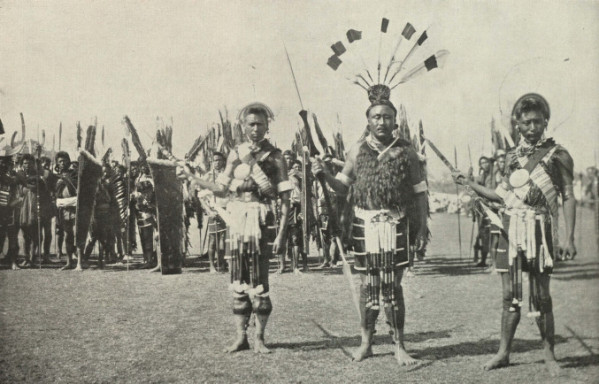Origin of the word ‘Naga’

The ancient history of the Nagas is unclear due to lack of documented historical record except for oral legends, folk song, and folk tales. Many theories have been put forward by historians, geographers, anthropologists and other scholars on the origin of the Nagas. But, it is still shrouded in mystery.
Theories on origin of the word ‘Naga’:
Originally, the Nagas did not call themselves by the name ‘Naga’. It was others / outsiders who gave the name ‘Naga’.
The word ‘Naga‘ is a vaguely defined umbrella term for several indigenous communities in North-East India and Western Burma. In India Nagas are found in Nagaland, four Districts in Manipur, one District in Assam and two Districts in Arunachal Pradesh. In addition to this, many Nagas also inhabit Western parts of Myanmar (Burma).
The exact origin of the term ‘Naga’ is unknown. There are various viewpoints on the origin of the term ‘Naga’:
- Since the time of Ptolemy during the 2nd Century A.D., the Nagas had something in common that made them recognizable as a people (though composed of different tribes and sub-tribes within). Claudius Ptolemy, the Greek scholar, in his geographia referred to Naga realm as ‘Nagalogoi‘ which means ‘the realm of the naked’ as recorded in Ptolemy, Claudius., Geographia, VIII, p.18-22.
- Some scholars say that the term is probably derived from the word ‘NOK‘ or ‘NOKA’ which means folk or people in some tribal languages.
- From the Burmese word “NAKA” meaning – ‘people with pierced earlobes‘:
- ‘No’ means ear pierced or to make a hole in or through, in Kachin language which is spoken by the Kachins of Burma.
- Piercing of the ear lobes is a widespread practice among the Naga tribes.
- From the Assamese word ‘noga’ meaning ‘naked‘
- From the Sanskrit word ‘Nag’ (snake)
- However, some refute this theory since Nagas are not associated with snake worship or any snake related traditions.
- Also from the Sanskrit word ‘NANGA’, which means ‘naked‘.
- According to Captain J. Butler, the term ‘Naga’ is derived from the Bengali word ‘Nangla’ or the Hindustani word ‘Nanga’, meaning naked, crude and barbarous (Butler:1847).
- According to Verrier Elwin, the most likely derivation is that ‘Naga’ is from the word ‘Nok’, which means people, in some Tibeto–Burman languages. [Elwin, Verrier., Nagaland, 1961, p.22. ]
- According to Dr. J.H.Hutton, it is derived from the Assamese word ‘Nanga‘.
- According to Hutton, it is typical of Assamese dialect to pronounce ‘a’ to ‘o’ and so ‘Nanga’ is changed to ‘Naga’ since the second ‘n’ is nasal and pronounced as ‘Noga’. [Hutton, J.H., The Angami Nagas, 1921, p.5]
The Nagas have no written historical record about their origin and the route of migration to their present habitation. However it is a general believe that the majority of the Nagas immigrated from South East through Indo-Myanmar border to the Naga Hills. According to the report on the province of Assam in 1854 by Mills A.J. Moffatt, the British first came in contact with the Nagas in 1832 when Captain Jenkins and Pamberton along with 700 soldiers and 800 coolies or porters to carry their baggage and provision marched across the Naga Hills in their attempt to find a route from Manipur to Assam.
Suggested Reading:
PREVIOUS: History #1 – The Naga People
NEXT: History #3 – Migration of The Nagas